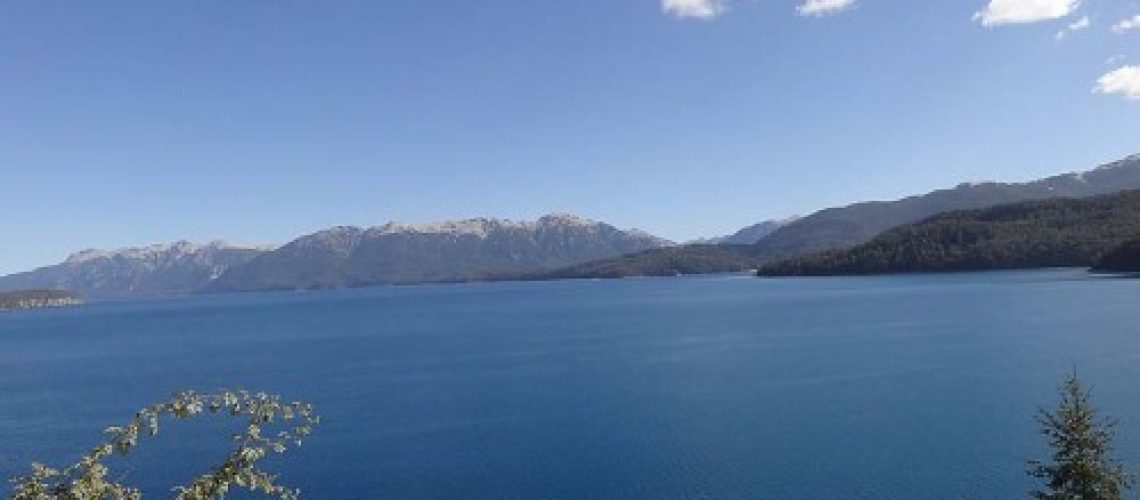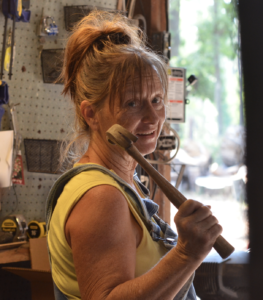If you recall, I went to Patagonia last week to do some science. My best intentions to post an update each day evaporated with my second attempt.
We were that busy.
Reflecting back a bit now on a dreary Monday morning in Houston, here are the things that stick in my head for the week we sampled, experimented, extracted, and will analyze in the weeks to come…
In a normal day, in a normal season on the Seven Lake Road, just north of the town of Bariloche, you would follow the road that brought you to overlooks of lakes that were the deepest blue you could imagine. Around 200 meters deep and one large enough that the prevailing winds provided ocean like waves, the blueness of the water indicated a unique habitat devoid of life in its upper regions.

The truth is that for about the top 30 meters of water in the lakes, life can’t live. There is too much sun. You might think it’s a good idea to bake to your crispiest brown under the hottest sun but most of life knows better. Even tiny microbes retreat to water depths where the light that reaches them is more kind in its potential to offer energy but not destroy while its doing so.
We talked a lot about this as we viewed the lakes and as we stopped at the largest, Nahuel Huapi, Esteban, the leader of this little group this week, walked over to me and explained. (Esteban is a senior scientist at Centro Regional Universitario Bariloche.)
“The matter of underwater light is: surface irradiance (just below the surface) is about 1700-1900 µmol Photons m-2 s-1, so then 1 % is 17-19 µmol m-2 s-1, and this is in Nahuel Huapi at a depth of about 45 m. In my desk where I work daily the irradiance is 4-8 µmol m-2 s-1, so there is more light at 45 m than in my desk,” says Esteban.
“If I can read a paper in my desk (and this include my capacity to understand it!) I would be able to do it at 45 m, but there are two problems: one is the the paper would get wet, and may be difficult to read if the ink is not waterproof, the other is the I should read it very fast or I will drunk,” Esteban continues.
The picture of just how bright the sun in as it travels through 120 feet of crystal blue water is clear in my brain.
Beatriz (Esteban’s wife) had showed me the little bottles of some of the tiniest bacteria we know that she had gotten from the lakes. She grows them happily in icebox incubator at the back of the lab. Like little African Violets, they were being irradiated with just the right light in Beatriz’s lab, partly because they contain their own natural sunscreen, in the form of pigments. Sort of liquid freckles. In pure cultures, in little flasks, they showed their true colors. Kind of beautiful in a nerdy kind of way, don’t you think?

Working away metabolizing various compounds below 120 feet of water in Lake Nahuel Huapi, these cyanobacteria poop out oxygen. (They don’t actually have an anus. Truthfully, they don’t have any kind of gut or alimentary canal. The oxygen comes out of pores in their cell wall. I just wanted to create an image in your mind. And it is poop of a kind, it’s …. boop… bacterial waste product.)
We stop near the shore of one of the smaller lakes and we are all mesmerized at how the natural disaster has changed the dynamics of the environment.

You cannot tell where the shoreline stops and the raft of pumice islands start. It’s not lost on us that we are placing our instruments on the floating rocks, as they act as workbench for our sampling.

Over the next months, we will be extracting the tiniest pieces of DNA off the pumice we sampled, from the first day it exited the volcano till now. Crushing the pumice and chemically extracting that chain of A’s and T’s and C’s and G’s, we will send those to a machine that will sequence those strings of letters. While your cell phone is using it’s cheap and highly sensitive semi-conductors to twitter your friends, those same kinds of conductors will be telling us who thinks the pumice is a good life raft.
I’m going to tell you what we find out. I could try to hazard a guess, but I bet biology surprises us. That’s the true beauty of science and exploration.
That and this. These are my friends in Bariloche. In little more than a week they stole into my heart.







3 Responses
I really enjoyed the article. I guess the fishing was not very good in the lakes.
Amazing! I wondered what happend to you and your posts. Thrilled to read of your scientific exploits, abeit, some of it went waaayyy over my head! Can’t wait to read about the discoveries you make with this project. Keep ’em coming! 🙂
Wow…if I could only understand part of what you said I would feel almost intelligent…..NOT (as the kids say). Your mind must be on high alert all the time. Can’t wait to see what all you discover. The pictures are beautiful!